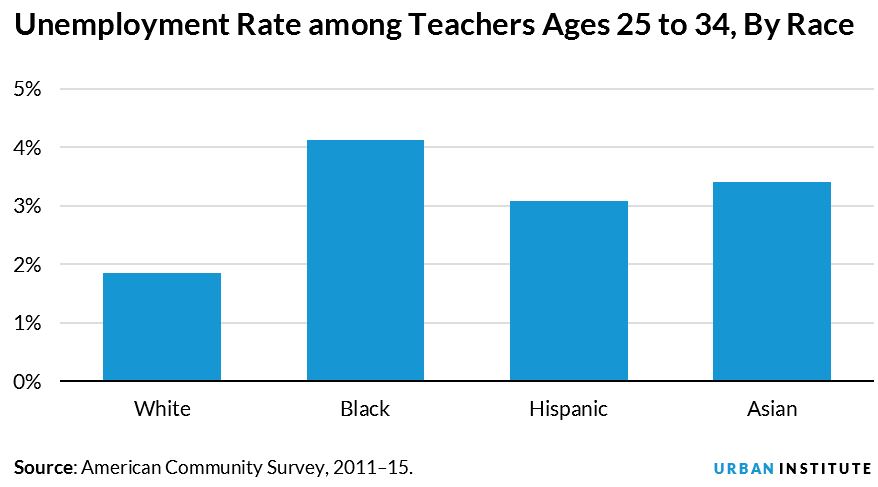
<p>Photo via Shutterstock.</p>
Our recent data visualization shows that the supply of teachers of color is constrained by the number of college graduates of color. But this is only part of the story. The diversity of the teaching workforce also depends on how many teachers of color are hired and stay in the profession.
The most recent Teacher Follow-Up Survey, a nationally representative survey administered by the US Department of Education, suggests that teachers of color leave the profession at a higher rate (8.3 percent) than white teachers (7.5 percent). Teachers of color also change schools at a higher rate (10.6 versus 7.5 percent), and of teachers who move, teachers of color are more likely to report their move as “involuntary.” Teachers of color also identify school factors as the primary reason for leaving the profession and changing schools.
Additional evidence from the American Community Survey on the latter stages of the teacher human capital pipeline reveals interesting disparities in the career paths of diverse teachers. Looking at teacher unemployment and attrition after receiving a teaching degree reveals differential exits and hire rates by teachers of color that may help explain why large representation gaps remain.
For example, of people who have teaching degrees, teachers of color report not teaching at higher rates than white teachers.

Teachers who are not teaching may still be in education or have changed jobs. But there is also a stark disparity between unemployment rates for white teachers and for teachers of color.

These gaps indicate friction in the teacher labor market. Although some “frictional” unemployment—vacancies that result from people moving jobs—is expected, the racial differences are pronounced enough to suggest something more is going on.
Considering all this in the context of the country’s well-documented teacher shortage raises questions about why teachers of color leave the profession and whether better addressing diversity in hiring and retention could alleviate the shortage.
Teachers of color are underrepresented at all stages of the teacher human capital pipeline entering teaching, and differential employment rates in an industry characterized by high job openings and mobility challenges may be exacerbating an already stark situation. In addition to producing more college graduates of color, policymakers and administrators should examine why teachers of color leave the profession and consider levers aimed at increasing equity in the later stages of the teacher human capital pipeline.
Let’s build a future where everyone, everywhere has the opportunity and power to thrive
Urban is more determined than ever to partner with changemakers to unlock opportunities that give people across the country a fair shot at reaching their fullest potential. Invest in Urban to power this type of work.